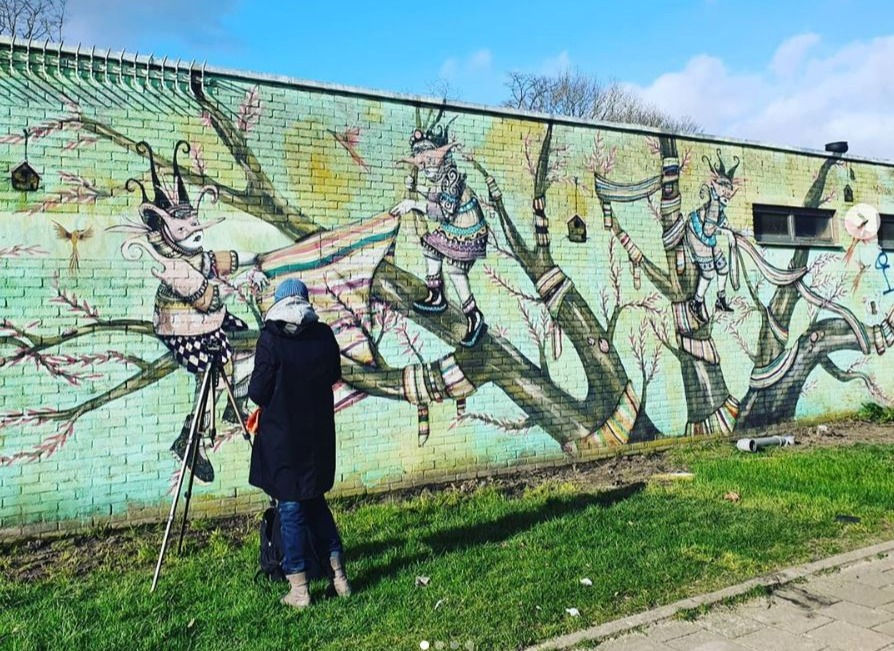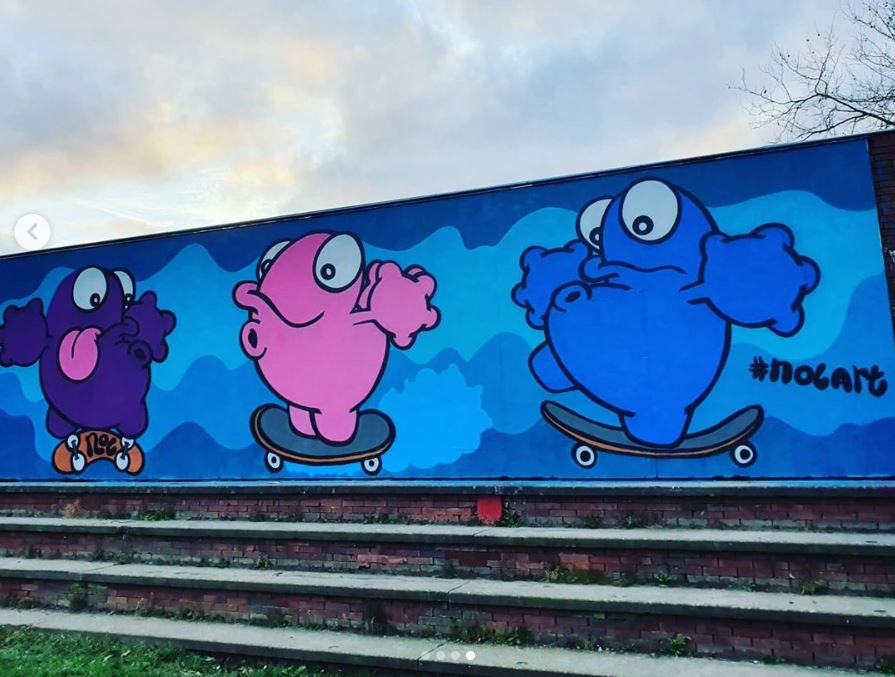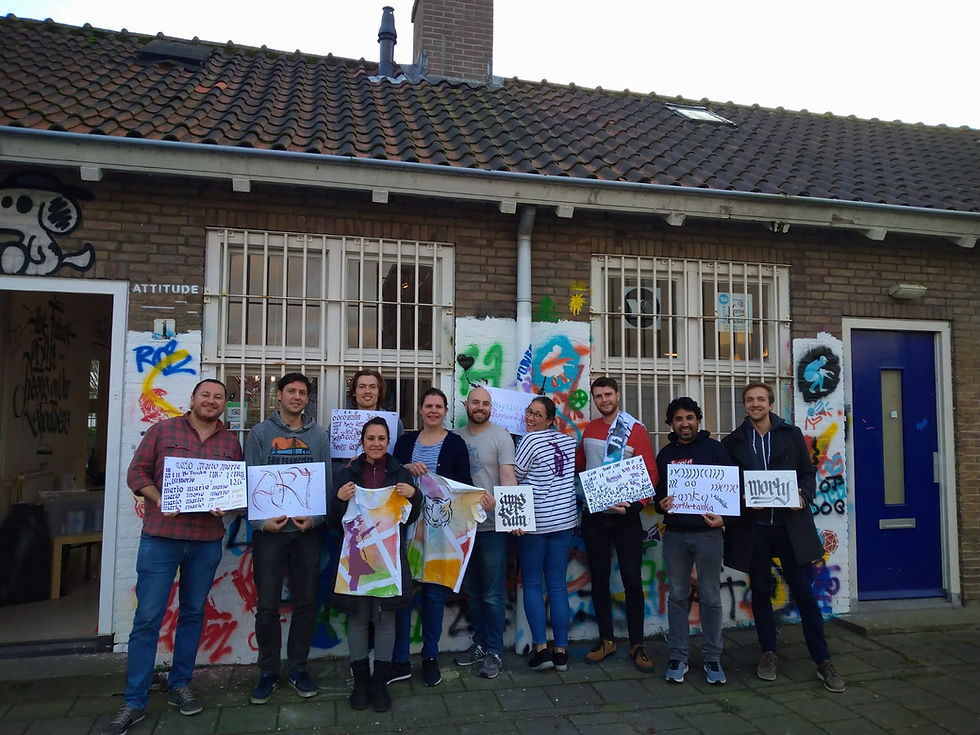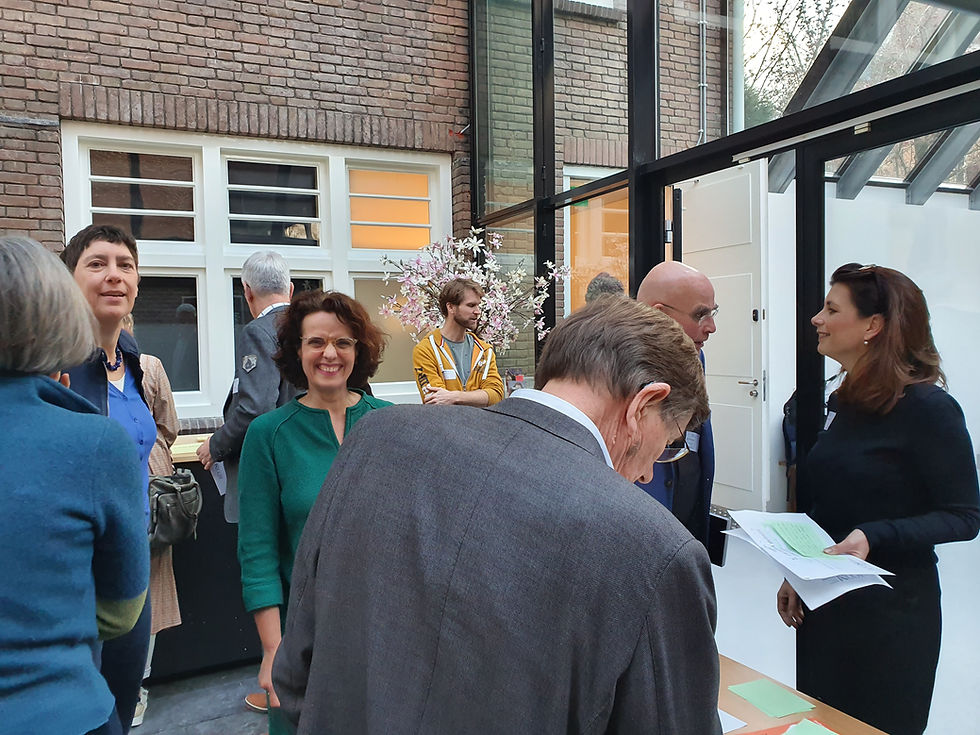Teaching, Learning and Growing at SAMA
- Jesse Scott
- Feb 11, 2020
- 4 min read
It’s been a week packed with teaching, learning here at Street Art Museum Amsterdam, as well as growth, completing a new wall and documenting an old one slated for demolition, in Virtual Reality.

“Destiny,” by the Spanish artist, Skount, is 160 sq metres mural, depicts the fates of ancient Greek mythology spinning, weaving, and cutting the thread that symbolizes the destinies of our lives, surrounded by Colibri bird and ladybugs. When SAMA painted the wall, the building had housed a community center and kindergarten before being converted to multipurpose space for social-entrepreneurial startups in Nieuw-West. Presently, the building will remain standing, however, “Destiny” has been captured in Virtual Reality, as it will be destroyed by retrofitting of new doors into the work, as the building is converted into housing for families living below the poverty line. Eventually it will be demolished to make way for new construction, but through VR, SAMA has been able to capture the wall, its setting, and the intangible heritage attached to it, preserving and archiving it for future viewing and study.
Meanwhile, a short bike ride away, at Confucius Speeltuin on Doctor H. Colijnstraat, our old friend from Breda, NolArt, completed the second work for our rotating wall, modeled after the Bowery Wall in New York City. Although SAMA is committed to respecting the fact that street art is temporary, public, and vulnerable to vandalism and damage, this wall gets particularly heavy damage from local youth. Rather than fighting it, we’ve decided to lean into it, asking a different artist to paint a new work every month or so. Nol has painted three of his classic monsters on skateboards, in his old-school bubbly-comic book-graff-animated style. This work will only be visible for a limited time, so be sure to see it before it’s gone!

On February 6, in partnership with local calligraffiti master, TeamBlazing, SAMA hosted ten analysts from the San Francisco-based software company, Optimizely for a mini-tour and afternoon workshop. This very high tech group was eager to experiment with the manual handcrafting processes TeamBlazin taught -- many said they hadn’t picked up a pen in years. After spending an hour in silent focus, dialed into individual calligraffiti production, we took them outside to learn stencil and freehand spraypaint techniques. After covering the side of our office with “fart” tags, they left very happy and inspired, one of them telling us that the workshop was life-changing!
"It was great fun!! I got really great feedback from the team and it was a good workshop. Thank you!" - Danielle from Optimizely

Finally, as most of us were in Nieuw-West hosting the workshop on Thursday (6), SAMA's founder Anna Stolyarova and Collection Researcher Vitória Zanquetta were at St. Catherine’s Convent in Utrecht at a conference held by the International Council of Museums (ICOM), as part of a series of meetings to discuss the new museum definition that will be more suitable to the role of museums in our contemporary society. This was a follow-up conference to the ICOM General Assembly meeting held in Kyoto in 2019.
The conference was fascinating for SAMA to be present at -- there is still no consensus on a final museum definition: even though there was a definition selected in the ICOM General Assembly in Kyoto last year, it was decided to postpone the official selection of a new definition was until June 2020. One of the most important arguments for this decision was that all committees in ICOM will have time to inform and consult their supporters until then. It is very exciting for SAMA to be involved in all this discussion, as the previous museum definition did not really contemplate museums such as SAMA, where collections are secondary to community engagement and social change.
The alternative definition selected in Kyoto, September 2019, already encompasses much more diverse museum structures and focuses on the social impact, inclusion and accessibility rather than objects:
“Museums are democratising, inclusive and polyphonic spaces for critical dialogue about the pasts and the futures. Acknowledging and addressing the conflicts and challenges of the present, they hold artefacts and specimens in trust for society, safeguard diverse memories for future generations and guarantee equal rights and equal access to heritage for all people. Museums are not for profit. They are participatory and transparent, and work in active partnership with and for diverse communities to collect, preserve, research, interpret, exhibit, and enhance understandings of the world, aiming to contribute to human dignity and social justice, global equality and planetary wellbeing.”
The critical reexamination of museums’ roles in different cultures and societies around the world is spurring a trend away from classical, colonially-founded, collections-based institutions. As a result of this shift, space is being opened in the formal academic and cultural world for more conceptual, inclusive, and participatory museums such as Street Art Museum Amsterdam, the Museum of Joy in San Francisco, or the Museum of Homelessness in London -- all compared as examples of museums of the future in a March 2017 New York Times publication [LINK].
The event at St. Catherine’s Convent was also a great opportunity to meet long-time colleagues, such as Bente Bergmans from the Museumvereniging, which will be meeting again next month for the Museum Knowledge Day, made new and important contacts with heritage professionals, and presented SAMA's new Managing Director Anne Boermans.

February's first week was full of activities, projects, and events here is much more to happen in the next weeks!








